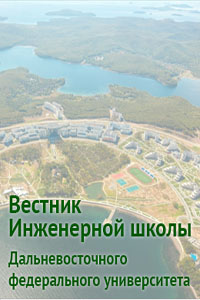Deformative characteristics of nanomodified fine-grained concrete
DOI:
https://doi.org/10.24866/2227-6858/2025-3/3-14Keywords:
deformation modulus, electrical strain gauge method, cement composite, nanotechnology, nanosilicaAbstract
The use of nanotechnology makes it possible to impart new unique properties to traditional construction materials. Experimental studies of the strength and deformation characteristics of cement composites are rather challenging due to the material’s pronounced anisotropic properties. This article examines the effect of silicon dioxide nanoparticles (nano-SiO₂) on the deformation characteristics of fine-grained concrete using the electrical strain gauge method. The study found that nano-SiO₂ enhances the strength properties of concrete and also affects Young's modulus and Poisson's ratio. The results obtained will help refine data for structural calculations involving nanomodified concrete.
References
1. Флорес-Вивиан И., Прадото Р., Кожухова М.И., Потапов В.В., Соболев К.Г. Влияние SiO2-наночастиц на свойства цементных материалов // Вестник Белгородского государственного технологического университета им. В.Г. Шухова. 2018. № 11. С. 6–16. DOI: https://doi.org/10.12737/article_5bf7e352d68e96.02791207
2. Горев Д.С., Потапов В.В., Горева Т.С., Портнягин Н.Н. Повышение характеристик бетонов вводом наночастиц SiO2 // Современные наукоёмкие технологии. 2018. № 7. С. 26–30. DOI: https://doi.org/10.17513/snt.37073
3. Potapov V., Efimenko Y., Fediuk R., Gorev D. Effect of hydrothermal nanosilica on the performances of cement concrete // Construction and Building Materials. 2021. Vol. 269. Р. 121307. DOI: https://doi.org/10.1016/j.conbuildmat.2020.121307
4. Соболев К. Современные достижения нанотехнологии в области цемента и бетона // Цемент и его применение. 2016. № 4. С. 96–102.
5. Янкович К., Станкович С.Й., Стоянович М., Бойович Д., Антич Л. Влияние нанокремнезёма и типа заполнителя на свойства высокопрочного бетона // Цемент и его применение. 2017. № 4. С. 118–120.
6. AlTawaiha H., Alhomaidat F., Eljufout T. A review of the effect of nano-silica on the mechanical and durability properties of cementitious composites // Infrastructures. 2023. Vol. 8, № 9. P. 132. DOI: https://doi.org/10.3390/infrastructures8090132
7. Carneiro L., Houmard M., Rocha V., Ludvig P. The effect of nanosilica incorporation on the properties of cement-based materials with and without other supplementary admixtures. A literature review // Open Const Build Tech J. 2022. Vol. 16. P. e187483682207290. DOI: http://dx.doi.org/10.2174/18748368-v16-e2207290
8. Hamada H. et al. Use of nano-silica in cement-based materials–a comprehensive review // Journal of Sustainable Cement-Based Materials. 2023. Vol. 12, № 10. P. 1286–1306. DOI: https://doi.org/10.1080/21650373.2023.2214146
9. Makarova N.V. et al. Influence of hydrothermal nanosilica on mechanical properties of plain concrete // Key Engineering Materials. 2017. Vol. 744. P. 126–130. DOI: https://doi.org/10.4028/www.scientific.net/KEM.744.126
10. Шведова М.А., Артамонова О.В., Славчева Г.С. Исследование влияния многокомпонентной добавки на структурообразование и твердение цементных композитов // Конденсированные среды и межфазные границы. 2022. Т. 24, № 1. С. 116–128. DOI: https://doi.org/10.17308/kcmf.2022.24/9062
11. Mohammad Tabish et al. Effect of nano-silica on mechanical, microstructural and durability properties of cement-based materials: A review // Journal of Building Engineering. 2023. Vol. 65. P. 105676. DOI: https://doi.org/10.1016/j.jobe.2022.105676
12. Sajjad Shokouh et al. Investigating the fatigue performance of Nano-Silica-modified concrete with various admixtures: An experimental study // Results in Engineering. 2025. Vol. 25. P. 103887.
13. Yi Lu et al. Experimental study on multiaxial tensile behaviors of concrete // Construction and Building Materials. 2025. Vol. 487. P. 141975.
14. Балек А.Е. и др. Исследование темпа набора прочностных и деформационных свойств бетона в шахтных и лабораторных условиях // Проблемы недропользования. 2024. № 4(43). С. 64–76. DOI: https://doi.org/10.25635/2313-1586.2024.04.064
15. Мордовский С.С. Начальный модуль упругости бетона и способы его определения // Традиции и инновации в строительстве и архитектуре. Строительство и строительные технологии. 2022. С. 37–45. EDN: GCUMDD
16. Калафатов Д.А. и др. Применение тензометрического метода определения НДС в диафрагмах при обследовании зданий и сооружений // Строительство и техногенная безопасность. 2022. № 26(78). С. 35–40. EDN: KXMHPG
17. Трекин Н.Н. и др. Экспериментально-теоретическое исследование прочности плит на продавливание // Вестник МГСУ. 2021. Т. 16, вып. 8. С. 1006–1014. DOI: https://doi.org/10.22227/1997-0935.2021.8.1006-1014
18. Smirnov I.V. et al. A unified experimental-theoretical approach to predict critical stress characteristics of failure and yielding under quasi-static and dynamic loading // Engineering Fracture Mechanics. 2020. Vol. 225. P. 106197. DOI: https://doi.org/10.1016/j.engfracmech.2018.10.023
Downloads
Published
Issue
Section
License
Copyright (c) 2025 Far Eastern Federal University: School of Engineering Bulletin

This work is licensed under a Creative Commons Attribution 4.0 International License.

